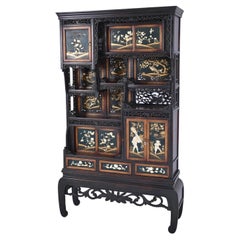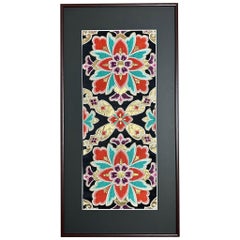Japanese Furniture
21st Century and Contemporary Japanese Furniture
Gold Leaf
21st Century and Contemporary Japanese Furniture
Silk, Thread
21st Century and Contemporary Japanese Furniture
Silk, Acrylic
21st Century and Contemporary Japanese Furniture
Silk, Thread
1870s Meiji Antique Japanese Furniture
Mother-of-Pearl, Hardwood
21st Century and Contemporary Japanese Furniture
Silk
19th Century Meiji Antique Japanese Furniture
Metal
21st Century and Contemporary Japanese Furniture
Gold Leaf
Early 20th Century Art Deco Japanese Furniture
Bamboo, Wood
20th Century Art Deco Japanese Furniture
Wood, Lacquer
21st Century and Contemporary Japanese Furniture
Silk, Thread
Early 20th Century Japanese Furniture
Rattan, Glass, Wood
21st Century and Contemporary Japanese Furniture
Gold Leaf
1930s Japonisme Vintage Japanese Furniture
Bamboo
21st Century and Contemporary Japanese Furniture
Silk, Thread
Early 20th Century Taisho Japanese Furniture
Iron
Late 19th Century Antique Japanese Furniture
Lacquer
2010s Post-Modern Japanese Furniture
Steel
Early 1800s Edo Antique Japanese Furniture
Lacquer
2010s Post-Modern Japanese Furniture
Steel
Early 20th Century Japanese Furniture
Metal
Late 19th Century Antique Japanese Furniture
Wood
1890s Antique Japanese Furniture
Wood
17th Century Edo Antique Japanese Furniture
Copper, Gold
20th Century Taisho Japanese Furniture
Iron
Late 19th Century Meiji Antique Japanese Furniture
Iron
Early 20th Century Taisho Japanese Furniture
Wood
21st Century and Contemporary Anglo-Japanese Japanese Furniture
Wrought Iron
20th Century Edo Japanese Furniture
Wood
Early 20th Century Japonisme Japanese Furniture
Bamboo
Early 20th Century Meiji Japanese Furniture
Wood
18th Century Edo Antique Japanese Furniture
Wood
Early 20th Century Taisho Japanese Furniture
Brass
Mid-20th Century Japanese Furniture
Aluminum
19th Century Meiji Antique Japanese Furniture
Iron
20th Century Japanese Furniture
Bamboo, Wood, Paper
Early 20th Century Meiji Japanese Furniture
Iron
Mid-20th Century Edo Japanese Furniture
Softwood, Teak
1880s Meiji Antique Japanese Furniture
Wood, Hardwood, Elm, Fruitwood, Softwood
Late 19th Century Meiji Antique Japanese Furniture
Elm
Late 19th Century Meiji Antique Japanese Furniture
Wood
1960s Mid-Century Modern Vintage Japanese Furniture
Teak, Plywood
Early 20th Century Taisho Japanese Furniture
Zebra Wood
19th Century Antique Japanese Furniture
Wood
Late 19th Century Antique Japanese Furniture
Elm
Early 20th Century Taisho Japanese Furniture
Metal
Early 20th Century Taisho Japanese Furniture
Wood
19th Century Antique Japanese Furniture
Wood
1880s Qing Antique Japanese Furniture
Hardwood
18th Century Antique Japanese Furniture
Wood
Mid-20th Century Japanese Furniture
Zebra Wood
Early 20th Century Taisho Japanese Furniture
Elm, Cedar, Paper
1880s Meiji Antique Japanese Furniture
Porcelain, Softwood, Lacquer
1950s Mid-Century Modern Vintage Japanese Furniture
Teak
Mid-20th Century Showa Japanese Furniture
Iron
19th Century Antique Japanese Furniture
Wood
Early 1600s Antique Japanese Furniture
Gold, Brass
1920s Taisho Vintage Japanese Furniture
Softwood, Lacquer
Read More
Chicago’s Pagoda Red Has a Spirited Mix of Asian Antiques and Bold New Art
For 25 years, gallerist Betsy Nathan has leveraged her keen eye and key connections to bring a unique selection of rare finds to the market.
12 Calming Spaces Inspired by Japanese Design
From cherry-blossom-adorned walls paired with glamorous lighting to wood-paneled ceilings above checkerboard-patterned chairs, these 12 spaces seamlessly blend Eastern and Western aesthetics.





